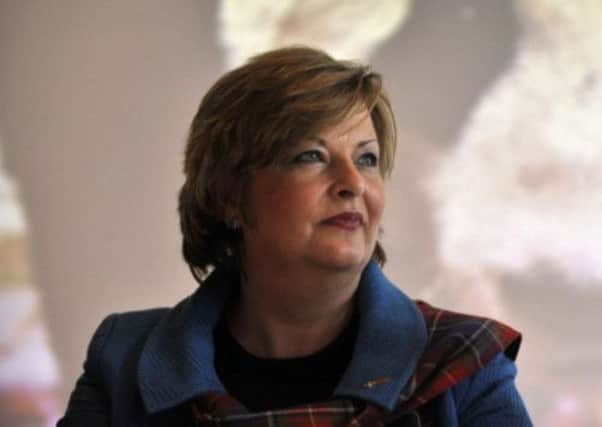Brian Ferguson: Flashbacks for creative community


I don’t mean his paintings, which have been drawing audiences in their thousands to Kelvingrove. He told me a story at the launch of his exhibition, recalling how he waited anxiously outside the offices of Scotland on Sunday late at night to collect a copy of the paper and read his very first interview. As soon as he could buy one, he rolled it up, sped home in a taxi, laid the paper out on the floor, lit a cigarette, poured a glass of wine and read the exposure he had been given.
I wonder what the equivalent ritual would have been for Scottish culture secretary Fiona Hyslop as she reviewed the coverage of her keynote speech at the Talbot Rice Gallery in Edinburgh in June.
Advertisement
Hide AdAdvertisement
Hide AdSix months after the downfall of the chief executive of her flagship cultural body, following the biggest artistic rebellion in Scotland in over a decade, her “vision” for the arts won almost unanimous acclaim. Much of it stemmed from the distance she placed between herself and the idea that the arts had to provide robust evidence of economic return to justify investment.
Although Creative Scotland hardly merited mention in the Talbot Rice speech, it was clear that its corporate ideology, ethos and language were being consigned to history.
But barely four months on, Ms Hyslop is faced with a mounting crisis threatening to become every bit as serious as the one which unfolded last year, which could have major implications for the way her government’s stewardship of the arts are perceived over the next year. Ironically, it is the economic benefit Scotland is said to be missing out on that is at root of this rammy.
A cynical view of the spate of headlines demanding action to stem a “crisis” in the Scottish film industry is that canny producers are simply trying to capitalise on the fact that Sunshine on Leith and Filth have arrived in the UK’s cinemas – to rave reviews and much talk of a booming industry. But the truth is more complex.
There has been a slow fuse burning away since the spring of this year when, behind the scenes, it became clear that plans to create a major film studio in Glasgow were stalling.
The Scottish Government’s creation of a “delivery group” to explore various options for the project and news that a major US fantasy series, Outlander, was being shot in a converted warehouse near the city understandably generated positive coverage.
But, rightly or wrongly, those behind the Clydeside project began to see their own plans slipping away. Their scheme had actually won a pledge of £1 million from Creative Scotland last year and the Scottish Government has now ringfenced £2m for the venture, but without actually committing to the site, while at least three significant studies are carried out.
One of those is Creative Scotland’s own film sector review, now not due until early 2014, but at the centre of concerns that film will continue to be the poor relation of the arts.
Advertisement
Hide AdAdvertisement
Hide AdIt does not take long to find evidence from senior film producers like Gillian Berrie and Iain Smith – two of the most outspoken figures at present – warning years ago about the implications of Scottish Screen being merged with the Scottish Arts Council. That decision was strongly endorsed by the SNP administration, which also warned the film sector its expectations of a £10m annual pot for productions was unrealistic.
We don’t yet know if Fiona Hyslop has a different view on this, but the current £3m production fund appears woefully inadequate compared to our European rivals.
The group of producers who have virtually declared war to secure promises of a better deal are quite right to compare that figure to the £7m found to promote the tourism industry on the back of Disney’s Scottish fantasy Brave.
The funding ceiling of £300,000 for major film productions is a good £100,000 shy of the public funding earmarked for a lavish event to mark the 700th anniversary of the Battle of Bannockburn.
Signing off a major film studio costing up to £15m and dramatically boosting the annual film fund to around the same figure may seem hopelessly unrealistic when Ms Hyslop has lost £2.5m from her culture budget next year.
But without substantial progress on both fronts, suggestions of the cultural vote for an independent Scotland already being in the bag are way more fantastical.